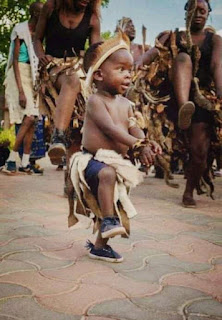UNDERSTANDING THE N'CWALA IN ZAMBIA!
WHAT IS THE N'CWALA?
Also Also dottingly referred to as the 'First Fruits' Harvest ceremony, the Incwala has it's roots in South Africa. The ceremony dates back way back, even before the birth of the Zulu acclaimed leader, Shaka Zulu.
Even the Ngonis inspirational figurehead, uZwangendaba was born when the ceremony was already a birthed entity. With it, Zwangendaba left his tribal St Lucia Bay area to embark of a dramatic and monumental journey that spanned more than three decades and covered an astonishing 5000 plus kilometers. When he died in 1845, his kingdom disintegrated,forming many sister kingdoms around Central Africa.
The faction led by his eldest son, Nthutho or simply Mpezeni settled in Chipata, East of Zambia. It's this same group that would take a lead and indeed act as a poster group in treasuring the ceremony. From the first Mpezeni the ceremony was celebrated. But in the evenings of his life, a new adversary of the Ngonis that was looming nearby would put a crushing end to a centuries old tradition.
The British had been told by their intelligence that Mpezeni's land was rich in minerals. Thus they set to colonize the area. But it was not easy. Nsingu, Mpezeni's eldest son and crown Prince realized that the whites were taking over his father's land clandestinely. He would not allow it, even if it meant fighting with his life.
In 1897 he led his regiment and attacked the British station in the Luangeni area. The British sent in reinforcements from neighboring Fort Manning. The Ngonis revolt was halted. Nsingu was captured and executed after being tried in a kangaroo court. But this was not enough, the British also confiscated 12000 cattle from the Ngonis, burn their villages and fields. The last nail on the coffin was banning the holding of the Ncwala describing it as being 'war like'.
Mpezeni's grandson, Chiloah Jere took over after his grandfather death in 1900. But the royal pilgrimage was never held during his reign. It was under his son's reign, Pontino Jele that the Incwala was resurrected in 1980. Since the time it was revamped, King Mpezeni moves from his Ekuphendukeni palace at Feni to Lawini at Mtengeluni every year in February.
The King is initially secluded where he goes through a cultural rebirth. At Lawini, the King acquires new power from Nkulukulu to govern the people. Traditionally, he is supposed to go into seclusion & fasting for at least 3 days. When he comes out, the people come to worship their Ngwenyama for he has survived meeting with Nkulunkulu.
Legend says some Kings were struck dead during the seclusion period. During the last day of the event at the Mtengeluni arena, a black bull is speared and King Mpezeni is given it's blood which he drinks.
The Black Bull serves two purposes: 1. Affirming to the King that His impis (soldiers) were ready for battle. In those days they killed it with bare hands,no rope no nothing only the spear!!! Blackness represents completeness. White colour is not revered. It has to be a Black Bull..without spot. 2. The Spiritual Part - the death of the bull represents the death of the past, starting afresh in new, after the King has returned alive from seclusion (where He receives a message from Nkulukulu). The bulls blood is drunk as a sign of brevity & recharging the spirit.
The ceremony in original Nguni custom is supposed to be held in December, the last full moon to be exact. When the King consumes ukhamba/igobongo that is concocted with iNcwala/uSelwa for 7 days before the full moon.




Comments
Post a Comment